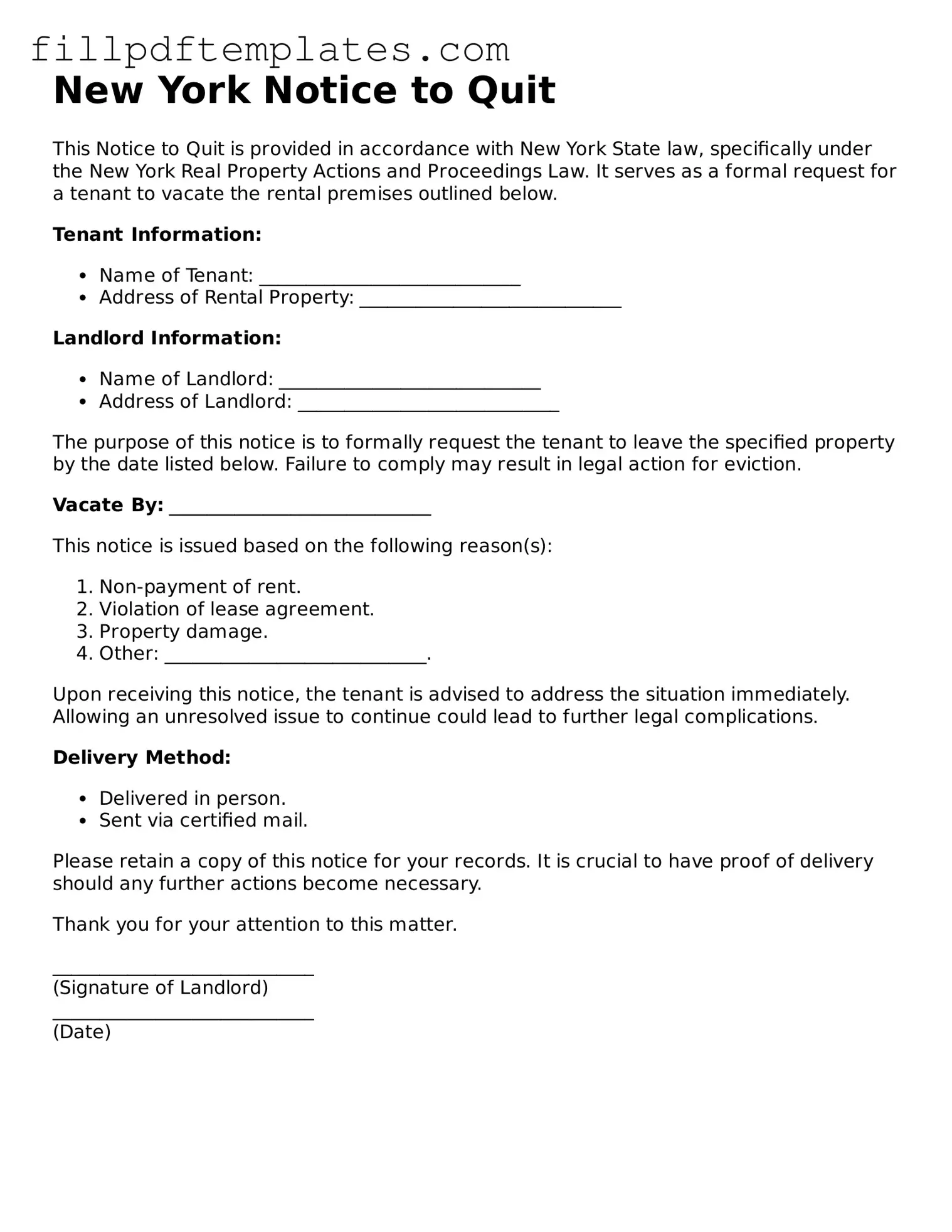New York Notice to Quit
This Notice to Quit is provided in accordance with New York State law, specifically under the New York Real Property Actions and Proceedings Law. It serves as a formal request for a tenant to vacate the rental premises outlined below.
Tenant Information:
- Name of Tenant: ____________________________
- Address of Rental Property: ____________________________
Landlord Information:
- Name of Landlord: ____________________________
- Address of Landlord: ____________________________
The purpose of this notice is to formally request the tenant to leave the specified property by the date listed below. Failure to comply may result in legal action for eviction.
Vacate By: ____________________________
This notice is issued based on the following reason(s):
- Non-payment of rent.
- Violation of lease agreement.
- Property damage.
- Other: ____________________________.
Upon receiving this notice, the tenant is advised to address the situation immediately. Allowing an unresolved issue to continue could lead to further legal complications.
Delivery Method:
- Delivered in person.
- Sent via certified mail.
Please retain a copy of this notice for your records. It is crucial to have proof of delivery should any further actions become necessary.
Thank you for your attention to this matter.
____________________________
(Signature of Landlord)
____________________________
(Date)
